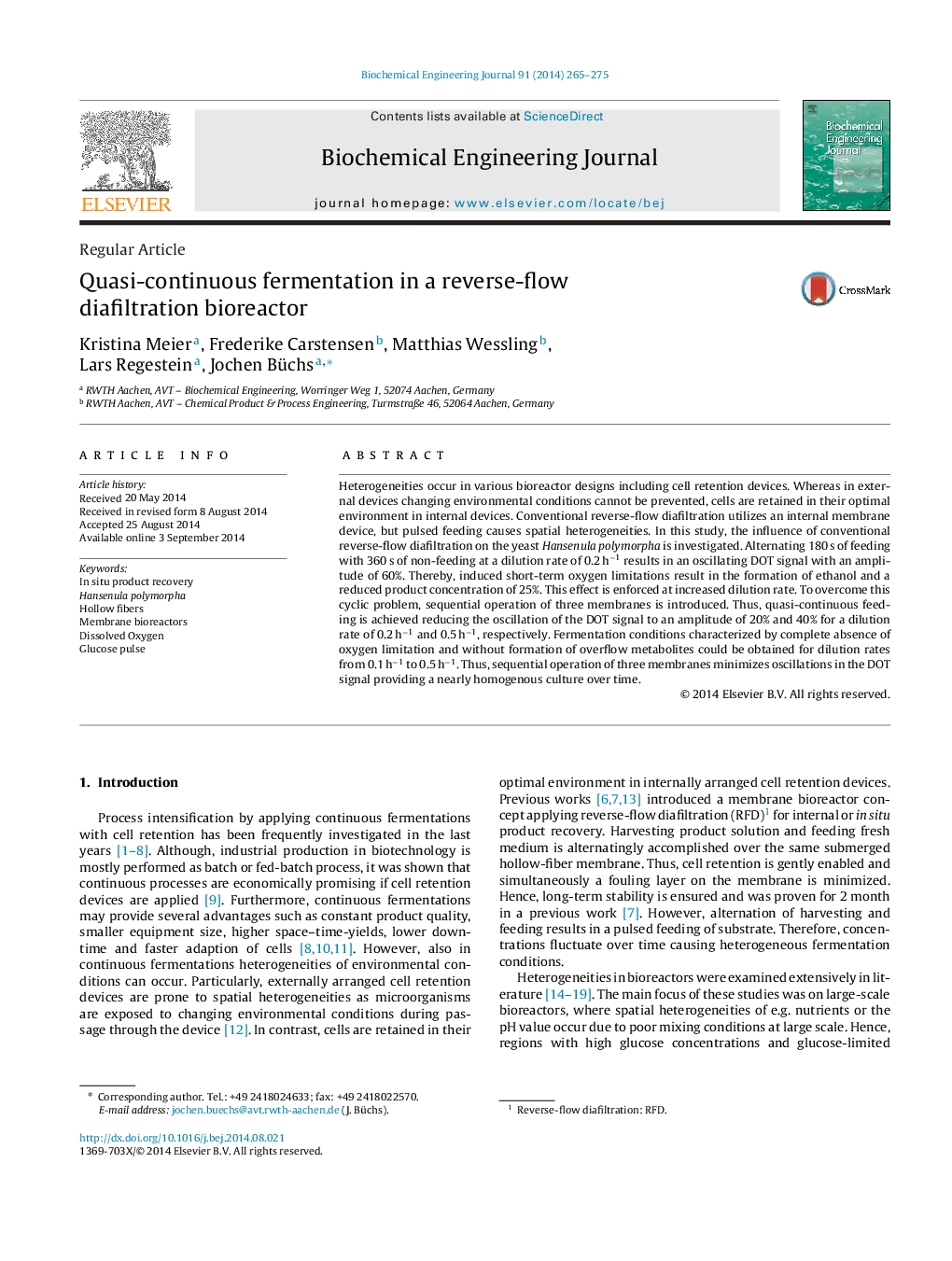| Article ID | Journal | Published Year | Pages | File Type |
|---|---|---|---|---|
| 3134 | Biochemical Engineering Journal | 2014 | 11 Pages |
•RFD is a membrane based cell retention system alternating feeding and harvesting.•Alternations result in feed pulses causing short-term oxygen limitations.•Short-term oxygen limitations of Hansenula polymorpha decrease product yield by 25%.•Limitations are enforced at increasing dilution rates.•Sequential operation of membranes result in continuous feeding without limitations.
Heterogeneities occur in various bioreactor designs including cell retention devices. Whereas in external devices changing environmental conditions cannot be prevented, cells are retained in their optimal environment in internal devices. Conventional reverse-flow diafiltration utilizes an internal membrane device, but pulsed feeding causes spatial heterogeneities. In this study, the influence of conventional reverse-flow diafiltration on the yeast Hansenula polymorpha is investigated. Alternating 180 s of feeding with 360 s of non-feeding at a dilution rate of 0.2 h−1 results in an oscillating DOT signal with an amplitude of 60%. Thereby, induced short-term oxygen limitations result in the formation of ethanol and a reduced product concentration of 25%. This effect is enforced at increased dilution rate. To overcome this cyclic problem, sequential operation of three membranes is introduced. Thus, quasi-continuous feeding is achieved reducing the oscillation of the DOT signal to an amplitude of 20% and 40% for a dilution rate of 0.2 h−1 and 0.5 h−1, respectively. Fermentation conditions characterized by complete absence of oxygen limitation and without formation of overflow metabolites could be obtained for dilution rates from 0.1 h−1 to 0.5 h−1. Thus, sequential operation of three membranes minimizes oscillations in the DOT signal providing a nearly homogenous culture over time.
